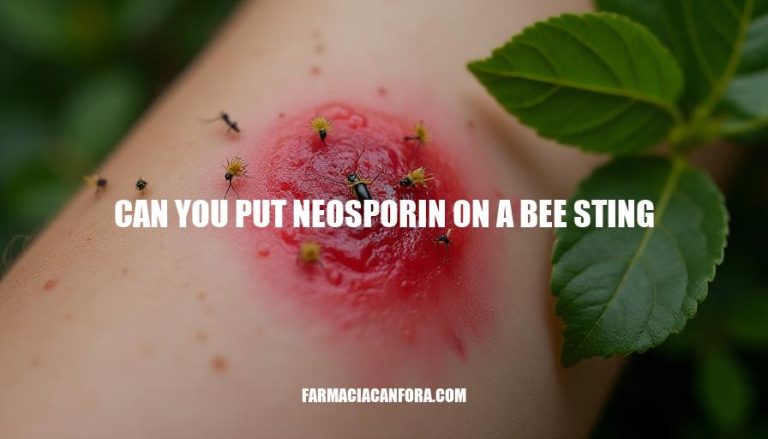


If you get stung by a bee, it’s not uncommon. It happens more often when the weather is warm and people are spending time outside. The sting hurts right away and can cause swelling and redness where it happened.
To treat it, you should remove the stinger, wash the area with soap and water, and put ice on it to reduce the swelling. Some people also use Neosporin because it helps keep the area clean and promotes healing.
Neosporin is a topical antibiotic ointment that contains three active ingredients: neomycin sulfate, bacitracin zinc, and polymyxin B sulfate. These ingredients work together to kill bacteria and prevent infection. When applied to a bee sting, Neosporin can help keep the wound clean and reduce the risk of infection.
Neosporin’s antibacterial properties come from its active ingredients.
Neomycin sulfate interferes with bacterial protein synthesis, bacitracin zinc inhibits cell wall synthesis, and polymyxin B sulfate disrupts the bacterial cell membrane. By preventing bacterial growth, Neosporin helps protect the sting site from infection.
Applying Neosporin to a bee sting can prevent infection by creating a barrier against bacteria. This is particularly important because bee stings can introduce bacteria into the skin, which can lead to infections if not properly treated.
Keeping the wound clean and protected with Neosporin can promote healing and reduce the risk of complications.
Experts recommend using Neosporin for minor wounds, including bee stings, to prevent infection. However, it’s important to follow proper first aid steps before applying Neosporin. This includes removing the stinger, washing the area with soap and water, and applying ice to reduce swelling.
While Neosporin is generally safe for most people, there are some precautions and potential side effects to be aware of.
Some individuals may be allergic to one or more of the ingredients in Neosporin, particularly neomycin, which can cause allergic contact dermatitis. Symptoms of an allergic reaction may include redness, itching, swelling, or a rash at the application site. If you experience any signs of an allergic reaction, discontinue use and consult a healthcare professional.
In addition to allergic reactions, overuse or misuse of Neosporin can lead to antibiotic resistance.
It’s important to use Neosporin only as directed and not to apply it to large areas of the skin or use it for extended periods without medical supervision.
In summary, Neosporin can be an effective way to prevent infection and promote healing when used properly on a bee sting. However, it’s essential to follow first aid steps, monitor for any signs of an allergic reaction, and use the ointment as directed to avoid potential side effects.
In summary, Neosporin can be an effective way to prevent infection and promote healing when used properly on a bee sting. However, it’s crucial to consult a healthcare professional for personalized advice and follow their guidance to ensure safe and effective treatment.